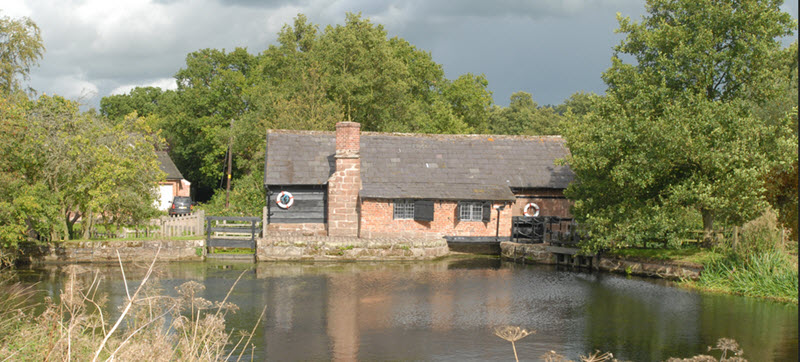Contents
Located in Chesire, England, the Stretton Watermill is owned and administered as a museum by the Chesire West and Chester Council.
The mill was in use until the late 1950s. In the mid-1970s the mill machinery was restored and the mill was turned into a museum.
This working two-storey historic watermill is designated Grade II* on the National Heritage List of England, and both the mill building and the mill machinery are considered to be of national importance.
Adjecent to the mill is a picnic area with tables, and the former stables houses a vistor centre with an exhibition, a shop and toilet facilities.

Location
Stretton is a village in Warrington, Cheshire, England. It is located at the southern tip of Warrington, near junction 10 of the M56 motorway.
Cheshire is a county in North West England, just south of Greater Manchester and Merseyside and east of Wales. Warrington is the largest town in Cheshire.
Architecture & Milling
The Stretton Watermill is two-storeys, with an attic for storing grain. The building has a timber-framed core cased in weatherboarding and sandstone. There is also a brick extension, and a chimney made from stone and brick. The roof is slated. All the windows are casements, and some of them have shutters.
The Stretton Watermill is equipped with one waterwheel outside and another one inside the building. Both are working. Outside the mill is a mill dam and a stoen-lined millrace with a sluice.
The waterwheel outside the building is a timber overshot wheel, while the indoor wheel is a breastshot one made from cast iron. The outdoor wheel drives wooden machinery, of which most hails from the 1700s. The indoor wheel is younger and drives cast iron machinery from the Victorian era.
A steep internal stairway will take you to the upper storey where the four millstones are kept. (A modern ramp has been installed to make it more accessible.) To get to the attic, one must climb a ladder.
History
The oldest remaining dated structure of the Stretton Watermill is from 1630, but a mill has been present here for much longer than that. A mill situated in this location is for instance mentioned in a record from 1351 when the mill changed ownership, and we also know that the Leche family owned a mill here in the 1500s. The cobbled ground floor that is still in the mill building is believed to be older than 1630, and was probably left in place when a new timber-framed mill buidling was erected in 1630. This mill had only a single breastshot wheel.
1770
The Stretton Watermill was extended by William Leche in 1770. Slates replaced the tatched roof, and the roof was also raised. The timber framing was encased with weatherboarding and sandstone, and the brestshot wheel got company in the form of an overshot wheel.
A stone in the western corner of the building is inscribed to commemorate this event.
1852
In 1852, the timber breastshot wheel was replaced by a cast iron wheel.
1959
The mill ceased operation in 1959.
1975-1977
The mill machinery was restored by Cyril & John Boucher in 1975-1977. When the restoration was finnished, the mill opened up as a museum.